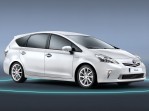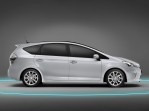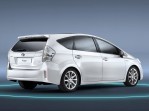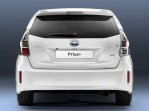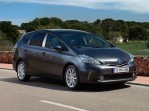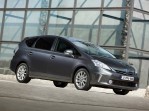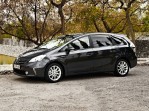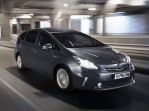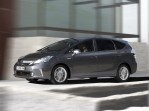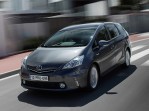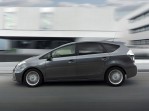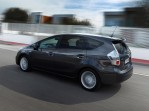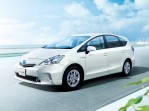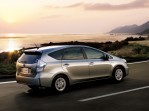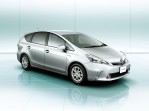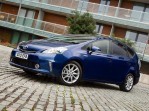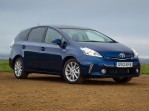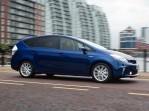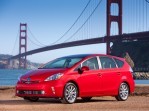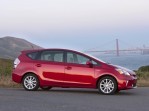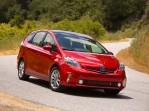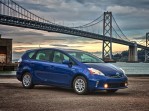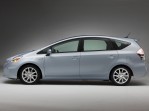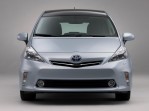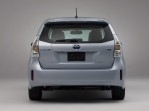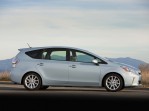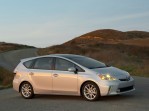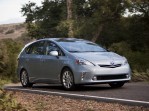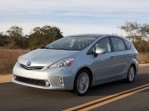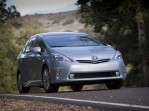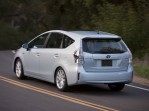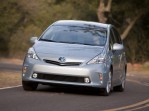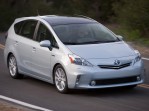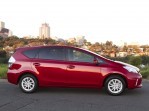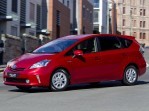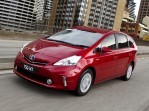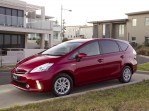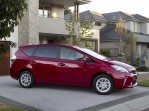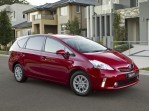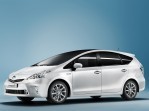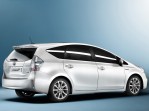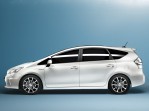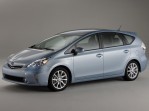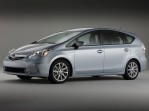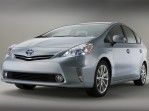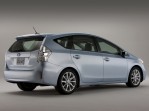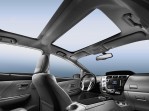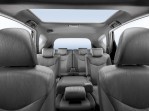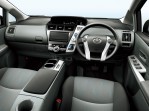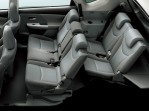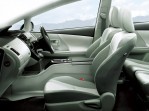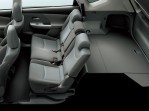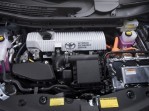Body style: Van
Segment: Medium MPV
Production years: 2011, 2012, 2013, 2014, 2015
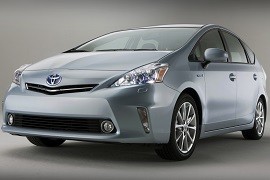 81 Photos
81 PhotosToyota tried to get more money from the platform developed for the Prius’ second generation and introduced the Prius+ as a seven-seat MPV that relied on the same underpinnings as its liftback brother.
While the world financial crisis still damaged the automakers’ pockets and customers alike, Toyota tried to push harder on the market with the Prius+, also known as the Prius V, in specific countries, where the V stood for versatility, according to Toyota. The new model was a minivan that hoped to win the wallets of those customers who needed a seven-seat car. Unfortunately for the Japanese automaker, this segment was narrow and already crowded. In the U.S., every mainstream automaker had one, while in Europe, this segment was dominated by Renault. In addition, buyers from the Old Continent were more keen to opt for a turbodiesel vehicle rather than a hybrid one, which cost more and lacked performance. Still, the car was well received in Japan and the U.S., where it sported the Prius V nameplate. It managed to sell over 600,000 units in five years, which was good for such a vehicle.
It was difficult not to see the connection between the Prius and the Prius+ due to the double-arched upper section of its headlights. On the other hand, its narrow grille adorned by a chromed horizontal slat resembled the Corolla. However, the lower bumper showed a decisive connection with the Prius thanks to the rectangular air intake flanked by vertical scoops, which housed the fog lamps and the blinkers.
From its profile, the Prius V featured a short nose and a panoramic windshield. The tall greenhouse featured a curved roofline that slightly sloped down towards the end of the vehicle and ended with an almost vertical drop for the tailgate. Toyota’s efforts to improve the MPV’s aerodynamics were noticed at the back, where the automaker placed a roof spoiler. After all its struggles, the car manufacturer created a minivan with a 0.29 Cd, which helped the Prius V get a decent fuel efficiency, albeit not significantly better than a European turbodiesel MPV could get. Toyota understood the importance of a good design, so it tried to create a better-looking minivan with the Prius V. As a result, it fitted it with 16-inch alloy wheels with an option for a 17-inch set. To accommodate the third row of seats, Toyota stretched the Prius’ wheelbase by three inches (8 cm). Finally, at the back, the LED taillights covered with clear lenses and sporting a chromed background resembled those from the regular Prius.
But the real importance of the vehicle was found inside. There, Toyota installed high-mounted seats up front for the two passengers, separated by a tall center console that housed a storage area and a small cup holder. On the center stack, the car manufacturer placed a 6.5-inch touchscreen for the Entune infotainment system, while next to that was the gear selector, which looked like a golf club’s end. On the dashboard, the automaker placed a rectangular-shaped instrument panel with an LED display. It didn’t look as modern as the one fitted on the center stack, but it was useful. In the middle row, Toyota installed three individual sliding and reclining seats, where the outboard ones could tilt forward to ease ingress and egress for those seated in the back.
Under the hood, Toyota installed a 1.8-liter Atkinson cycle gasoline engine paired with an electric motor for a total output of 134 hp (136 PS). The entire power assembly was mated to an electronically controlled CVT that optimized fuel efficiency. As for performance, it was slightly slower than its hatchback sibling but good enough for most travels and highway merging.
TOYOTA Prius v/Prius+ 2011, 2012, 2013, 2014, 2015
- 1.8 CVT (136 HP)
TOYOTA Prius v/Prius+
1.8 CVT (136 HP)
ENGINE SPECS - 1.8 CVT (136 HP) | |
|---|---|
| Cylinders: | L4 |
| Displacement: | 1797 cm3 |
| Power: | 72.8 KW @ 5200 RPM 99 HP @ 5200 RPM 98 BHP @ 5200 RPM |
| Torque: | 105 lb-ft @ 2800 RPM 142 Nm @ 2800 RPM |
| Fuel System: | Multipoint Injection |
| Fuel: | Hybrid |
PERFORMANCE SPECS | |
|---|---|
| Top Speed: | 103 mph (166 km/h) |
| Acceleration 0-62 Mph (0-100 kph): | 11.3 s |
TRANSMISSION SPECS | |
|---|---|
| Drive Type: | Front Wheel Drive |
| Gearbox: | e-CVT |
BRAKES SPECS | |
|---|---|
| Front: | Ventilated Discs |
| Rear: | Discs |
TIRES SPECS | |
|---|---|
| Tire Size: | 205/60R16 |
DIMENSIONS | |
|---|---|
| Length: | 181.9 in (4620 mm) |
| Width: | 70.1 in (1781 mm) |
| Height: | 62.6 in (1590 mm) |
| Front/rear Track: | 60.2/60.5 in (1,529/1,537 mm) |
| Wheelbase: | 109.4 in (2779 mm) |
| Ground Clearance: | 5.7 in (145 mm) |
| Cargo Volume: | 34.3 cuFT (971 L) |
| Aerodynamics (Cd): | 0.29 |
WEIGHT SPECS | |
|---|---|
| Unladen Weight: | 3241 lbs (1470 kg) |
| Gross Weight Limit: | 4751 lbs (2155 kg) |
FUEL ECONOMY (NEDC) | |
|---|---|
| City: | 61.9 mpg US (3.8 L/100Km) |
| Highway: | 56 mpg US (4.2 L/100Km) |
| Combined: | 57.4 mpg US (4.1 L/100Km) |
| CO2 Emissions: | 96 g/km |
| Notes |
|---|
| Specified cargo capacity was measured with two-row seats in place. Hybrid system Electric motor power: 60 kW (82 HP) Electric motor torque: 142 Nm (105 lb-ft) Total system power: 100 kW (136 HP) Total system torque: 207 Nm (153 lb-ft) |

